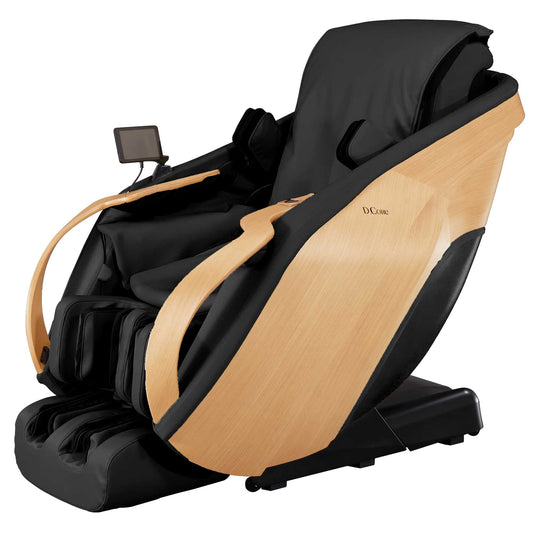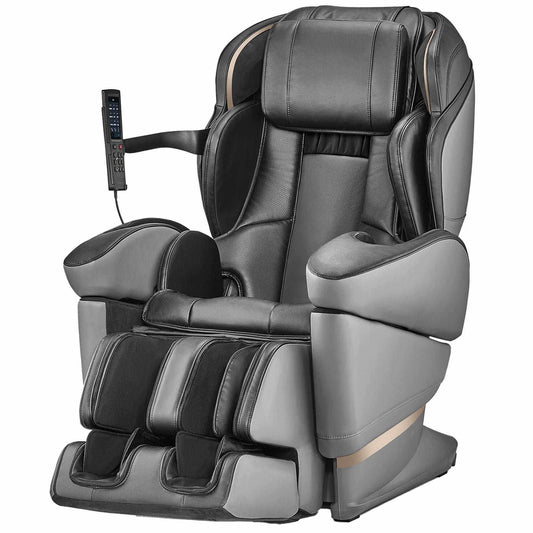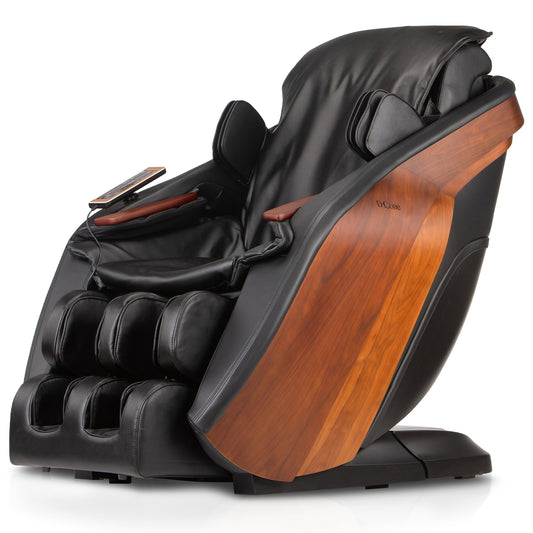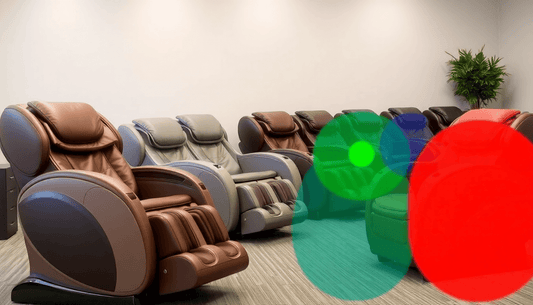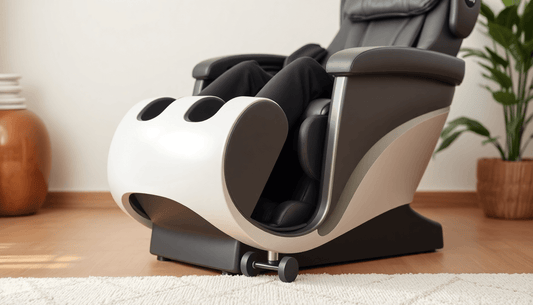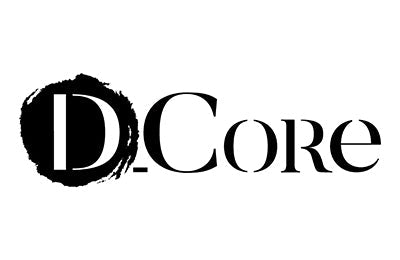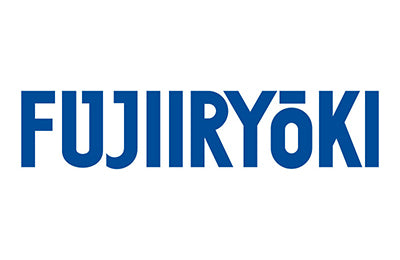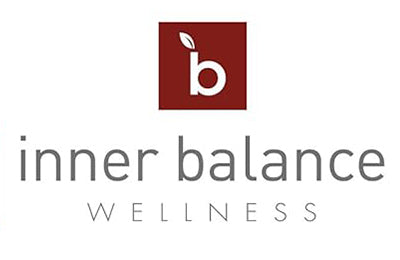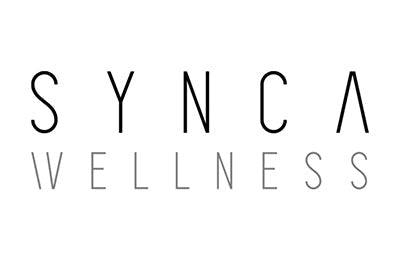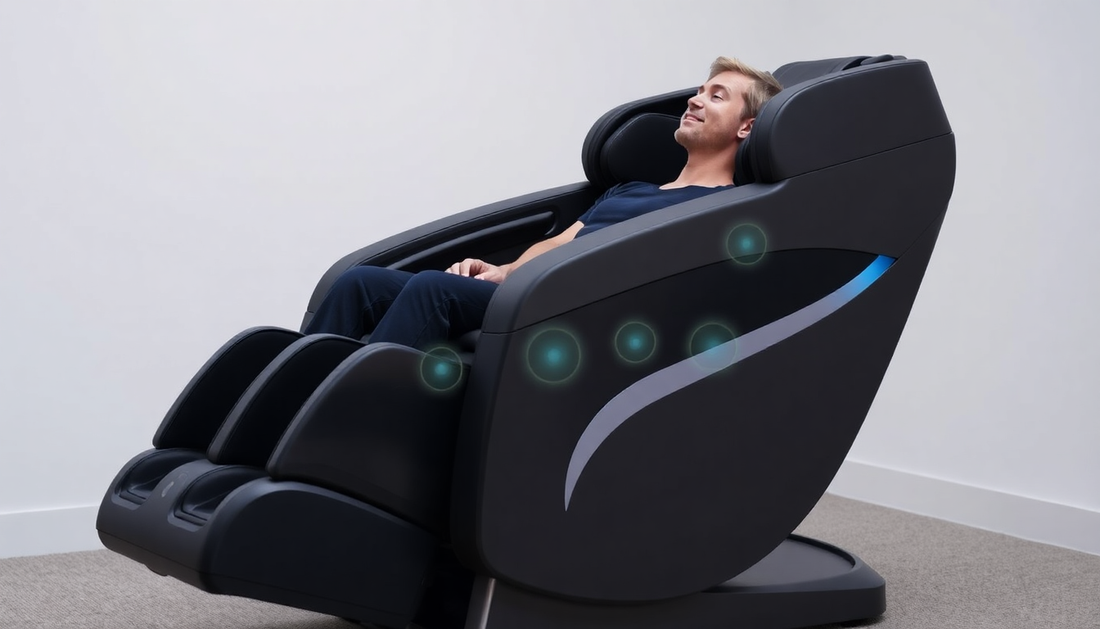
Model-a-Day Demo: Fujiiryoki Massage Chairs — Day-by-Day Techniques, Target Zones (Ankle to Head) & Therapeutic Benefits for Calm Plus, Cyber Relax AI, Pro & Elite
Introduction — Why a Model-a-Day Demo?
Fujiiryoki has long been recognized for building massage chairs that combine Japanese engineering, ergonomic design, and clinically minded features. This extended Model-a-Day demo provides a comprehensive, searchable, SEO-optimized guide that maps the Calm Plus, Cyber Relax AI, Cyber Relax Pro, and Cyber Relax Elite models to precise massage techniques, target zones (ankle to head), and measurable therapeutic benefits. The goal is practical: enable buyers, therapists, athletes, and wellness seekers to choose programs, set intensities, and structure repeated sessions that maximize comfort, recovery, and long-term gains.
What this long-form guide contains
- Detailed per-model day-by-day sequences from ankle through head.
- Technique-to-feature mapping: how chair functions implement Swedish, Deep Tissue, Shiatsu, and other techniques.
- Therapeutic benefit analysis linked to the targeted zones.
- Beginner, intermediate, and advanced session variations.
- Weekly and monthly protocols for recovery, performance, and chronic-care maintenance.
- Safety, contraindications, and troubleshooting advice.
- SEO and content strategy tips for related product pages or blogs.
Fujiiryoki at a glance: core technologies
- Roller systems and multi-axis rollers: create simulated hand techniques like kneading, rolling, and compression.
- Air-compression modules: for calves, shins, ankles, hands and arms to promote venous return and lymphatic flow.
- Reflexology foot plates: target arches, heels, and toes for local and reflexive benefits.
- Heat elements: commonly in the lumbar and foot areas for tissue pliability and comfort.
- Sensors and AI mapping (in Cyber Relax AI): detect posture, tension hotspots, and tailor programs automatically.
- Zero-gravity and recline features: reduced spinal load and improved circulation during sessions.
Technique primer: what each term means in a chair context
- Swedish Massage: simulated long gliding strokes produced by rollers or wide pad movement to promote circulation and relaxation.
- Deep Tissue: increased pressure and sustained compression aimed at deeper fascial layers; delivered by stronger rollers, slower movements, and more focused nodes.
- Trigger Point: pinpoint pressure from nodes or targeted rollers to release hyperirritable spots often associated with referral pain.
- Acupressure: steady pressure on specific points; chairs implement this with firm nodes and timed holds.
- Shiatsu: rhythmic finger-pressure-like cycles along the spine and meridians, replicated by rotating nodes and vertical travel of rollers.
- Reflexology: foot-plate nodes that stimulate zones corresponding to other organs and systemic response.
- Kneading: circular, compressive motions used to soften muscle tissue and break adhesions.
How to use intensity safely: a quick reminder
- Start low if you're new to massage chairs; increase pressure gradually across sessions.
- After aggressive sessions (deep tissue/trigger point), rest 24–72 hours before repeating the same intensity to allow tissue recovery.
- To avoid dizziness, move out of deeply reclined positions slowly and sit upright for a minute before standing.
- Monitor skin and sensation: numbness, sharp pain, or swelling are signs to stop and consult a professional.
Day 1 — Calm Plus: gentle recovery, circulation, and sleep support
Who it's for
- Beginners, older adults, those needing light recovery after travel or desk work.
- Anyone wanting daily stress reduction and improved peripheral circulation.
Detailed target zones & rationale
- Ankle & Heel: light compression reduces mild edema and improves venous return.
- Feet: reflexology and gentle rollers enhance local comfort and sleep-promoting relaxation.
- Calf & Thigh: mild kneading and compression prevent morning stiffness and post-flight heaviness.
- Lower Back & Spine: Swedish strokes and heat support lumbar relaxation and postural comfort.
- Neck, Shoulders & Head: low-intensity acupressure and mild kneading ease tension-type headaches.
Complete session (Beginner, 25–30 minutes)
- Warm-up: 2 minutes of gentle full-foot compression and micro-vibration to orient circulation.
- Feet & Heels: 4–5 minutes of reflexology patterns; include alternate rolling along the arch and heel pad to ease plantar tension.
- Ankle & Calf: sequential air compression followed by mild kneading, 4 minutes total to promote venous return.
- Thighs & Legs: light Swedish and stretching-assisted glide if chair provides leg extension, 3–4 minutes per side.
- Lower & Mid-back: heat-enabled Swedish strokes and kneading for 6 minutes focusing on lumbar relaxation.
- Shoulders & Neck: 3 minutes of soft acupressure; avoid aggressive traction for beginners.
- Head: 1–2 minutes gentle scalp vibration if available; finish with a 2-minute full-body slow glide.
Benefits tied to Calm Plus
- Blood Flow Control: rhythmic compression and Swedish strokes support peripheral circulation and reduce pooling in the feet and ankles.
- Fatigue Relief: light, low-stress sessions promote parasympathetic activation and sleep-readiness.
- Stress Relief: consistent acupressure patterns lower perceived stress and muscular tension.
Variations and progression
- Intermediate: extend lower back work to 8 minutes and include mild kneading on calves at a slightly higher setting.
- Advanced (sensitive users): Add an extra 5 minutes of foot reflexology focusing on heels and the plantar fascia if comfortable.
Day 2 — Cyber Relax AI: smart personalization for targeted recovery
Who benefits most
- Users with uneven tension patterns, frequent localized pain, and those who prefer data-driven personalization.
- Athletes and desk workers who need pinpointed attention to known problem areas.
Why AI matters
Cyber Relax AI adds value by scanning posture and tension points, then adjusting roller paths and pressure distribution. This reduces the time spent manually tuning programs and helps spot asymmetries that can be addressed more quickly.
Techniques matched to AI functions
- Deep Tissue & Trigger Point: AI extends dwell time on detected knots and increases pressure incrementally.
- Shiatsu & Acupressure: AI targets meridian lines and holds at key points for autonomic reset.
- Reflexology: foot maps are refined by AI to apply pressure where the client’s anatomy indicates sensitivity.
Full AI-guided sequence (Intermediate, 30 minutes)
- Auto-scan: allow the AI mapping to complete (1–2 minutes) to identify high-tension zones.
- Feet & Ankles: 4 minutes; AI emphasizes problem points and uses heat for stiffness.
- Calves & Knees: 5 minutes of alternating deep kneading with trigger point holds directed by AI.
- Thighs & Full Legs: 5 minutes stronger strokes to assist lactic clearance.
- Lower Back: 7 minutes of AI-detected deep tissue and shiatsu; use heat for 3–5 minutes in the lumbar area to improve mobility.
- Mid Back & Shoulders: 4 minutes of trigger point bursts to release referral patterns.
- Neck & Head: 3 minutes of gentle traction and acupressure tailored by AI to the shape of your neck.
- AI Cool-down: 2–3 minutes of Swedish strokes to reintegrate tissue tension and calm the nervous system.
Therapeutic outcomes (what to expect)
- Pain Relief: AI tends to accelerate symptom reduction by detecting and addressing root tension nodes earlier in a session.
- Spine Alignment Support: repeated AI-corrected sessions can help reduce asymmetrical loading by targeting tight unilateral muscles.
- Injury Recovery Assistance: when used conservatively, targeted deep tissue can complement rehab under practitioner guidance.
Day 3 — Cyber Relax Pro: performance-focused therapy
Who should choose Pro
- Athletes, physically demanding professionals, manual laborers, and people with chronic musculoskeletal tension who need stronger work.
Pro-level features and how they implement techniques
- Higher-intensity rollers and stronger compression profiles enable effective deep tissue simulation.
- Extended trigger point programs with configurable dwell times and cyclical pressure release.
- Advanced foot modules for addressing plantar fasciitis, heel spurs, and chronic heel pain through rolling + reflexology.
Performance recovery session (Advanced, 35–40 minutes)
- Feet & Heels: 6 minutes of aggressive reflexology with rolling and heel-pad focus to release plantar adhesions.
- Ankles & Calves: 6 minutes alternating deep kneading and percussion-style compression for muscle tension and tightness.
- Knees & Thighs: 6 minutes of focused deep tissue with longer roller strokes and stretch integrations—ideal pre- or post-workout.
- Full Back & Spine: 10 minutes of deep kneading, trigger point hits, and shiatsu nodes; end with a 2-minute traction or spinal glide where available.
- Neck & Shoulders: 5 minutes intense trigger point release and kneading for referral pain reduction.
- Hands & Wrists: 2–3 minutes compression and kneading to relieve repetitive strain.
- Recovery cool-down: 2–3 minutes of low-intensity Swedish strokes and controlled breathing prompts if available.
Benefits and expected adaptation
- Muscle Therapy and Tissue Remodeling: regular deep work helps reduce restrictive adhesions and improve functional range of motion.
- Pain Reduction: for myofascial pain patterns and chronic knots, repeated focused sessions typically show measurable relief over weeks.
- Flexibility & Performance: increased ROM, reduced DOMS when used in recovery windows after intense exercise.
Day 4 — Cyber Relax Elite: integrated, premium whole-body therapy
Elite differentiators
- Finest granular control of pressure across multiple zones with customizable programs.
- Enhanced heat zones, multi-mode traction, advanced reflexology and foot heat, and finely tuned air-compression sequences.
- Designed for clinical-grade comfort and long-term management of chronic tension.
Elite session framework (Customizable, 40–50 minutes)
- Preparation: 3 minutes of gentle full-body compression and breathing prompts to calibrate relaxation.
- Feet & Heels: 6–8 minutes with heat, rolling, and reflexology to release plantar fascia and heel tension.
- Calves & Knees: 6 minutes alternating compression and deep kneading with targeted trigger point holds where adhesions are detected.
- Thighs & Full Legs: 6 minutes posterior chain integration and stretch patterns to improve gait mechanics.
- Back & Spine: 12 minutes of combined shiatsu, deep rollers, and optional traction for decompression and spinal alignment support.
- Shoulders & Neck: 6 minutes of layered acupressure, trigger point release, and gentle traction to reduce cervicogenic headaches and upper-crossed syndrome.
- Hands & Wrists: 3 minutes of air compression and kneading for repetitive strain relief and improved circulation.
- Head & Nervous System Recovery: 4 minutes of scalp stimulation and guided breathing to enhance vagal tone and relaxation.
- Whole-body Reintegration: 3 minutes of Swedish glide and slow compression to normalize tissue tone before exiting the chair.
Comprehensive benefits of Elite
- Spine Alignment Support: consistent use with traction and shiatsu can help maintain improved posture and reduced compressive loads.
- Autonomic Balance & Stress Relief: longer, gentle acupressure and breathing protocols support parasympathetic activation.
- Blood Flow & Lymphatic Return: graduated compression and rhythmic rolling reduce edema and support metabolic waste clearance.
Weekly programming templates
Below are two sample weekly plans tailored to different user goals. Adjust intensity and duration according to tolerance and any professional guidance.
Recovery & Wellness Week (4 sessions)
- Monday — Calm Plus: morning 25-minute relaxation session focused on circulation and desk-related tension.
- Wednesday — Cyber Relax AI: 30 minutes targeted to mid-back and shoulders to counteract posture issues.
- Friday — Calm Plus: evening wind-down focused on feet, calves, and lumbar heat to improve sleep quality.
- Sunday — Cyber Relax Elite (short program): 35 minutes full-body for deeper tissue clearance and lymphatic support.
Performance & Rehab Week (5–6 sessions)
- Monday — Cyber Relax Pro: post-training recovery, 35 minutes heavy leg and back work.
- Tuesday — Cyber Relax AI: targeted release for localized tension areas identified by the AI scan.
- Thursday — Calm Plus: active recovery session to encourage circulation without deep tissue work.
- Saturday — Cyber Relax Elite: long integration session for spinal traction and systemic recovery.
- Optional short daily foot sessions (5–10 minutes) for plantar health and circulation.
Monthly plan for chronic conditions
- 2× weekly focused sessions on problem areas (Pro or AI depending on needs).
- 1× weekly Elite session for whole-body integration and spinal traction.
- 2–3 short Calm Plus sessions for rest and autonomic balance.
- Review progress every 4 weeks — adjust intensity if pain persists or increases.
Beginner vs. Intermediate vs. Advanced: how to scale a session
- Beginner: 20–30 minutes, low intensity, prioritize Swedish and mild kneading, avoid prolonged trigger point work.
- Intermediate: 30–40 minutes, medium intensity, introduce targeted trigger point and deeper kneading, add localized heat.
- Advanced: 40–50+ minutes, higher intensity and longer dwell times on trigger points, follow aggressive sessions with rest days for recovery.
Safety, contraindications, and when to get professional advice
- Avoid aggressive modes with signs of acute inflammation, open wounds, deep vein thrombosis, or recent fractures.
- Consult healthcare providers if pregnant, have advanced cardiovascular disease, severe osteoporosis, or implanted medical devices sensitive to electromagnetic fields.
- Neuropathy or reduced sensation (e.g., diabetic neuropathy) requires caution; reduce pressure and session length to avoid tissue damage.
- If you experience new, sharp, or radiating pain during a session, stop immediately and seek medical advice.
Maintenance, care, and troubleshooting
- Keep the chair in a dry, temperature-controlled environment; avoid direct sunlight that can degrade upholstery and electronics.
- Clean upholstery with manufacturer-recommended cleaners to avoid cracking or discoloration.
- Regularly check and tighten visible bolts and connectors per the user manual; schedule professional servicing annually or as recommended.
- If rollers are noisy or the chair behaves unpredictably, perform a reboot per manual instructions and contact Fujiiryoki service if problems persist.
Buying guide: choosing your Fujiiryoki model
- Calm Plus: choose for daily relaxation, older adults, and low-intensity recovery use cases.
- Cyber Relax AI: choose if you want automated personalization that adjusts to body asymmetries and tension hotspots.
- Cyber Relax Pro: select when you need stronger, performance-oriented therapy and robust trigger point work.
- Cyber Relax Elite: invest in this model for maximum control, premium features, and long-term therapeutic outcomes.
- Consider service and warranty terms, delivery and installation costs, and whether the retailer offers a trial period or in-home demo for fitting.
Frequently Asked Questions (FAQ)
- Q: How often should I use a massage chair? A: 3–5 times per week for general wellness. For performance recovery, use after intense training sessions but alternate intensity to allow tissue recovery.
- Q: Can massage chairs help with chronic back pain? A: Many users experience reduction in muscle-related back pain through consistent use, especially when programs include shiatsu, deep kneading, and traction. For structural spine conditions, consult a specialist.
- Q: Are foot rollers safe for plantar fasciitis? A: When used gently and combined with heat, rollers can ease plantar tension; avoid aggressive deep work during acute flare-ups.
- Q: What if I feel sore after a session? A: Mild soreness is common after deeper sessions. Hydrate, rest, and reduce intensity in the next session. Severe or persistent pain requires medical evaluation.
SEO and content strategy recommendations (practical checklist)
- Primary meta title suggestion: Model-a-Day Demo — Fujiiryoki Massage Chairs: Calm Plus, Cyber Relax AI, Pro & Elite Explained
- Meta description suggestion: Explore day-by-day protocols from ankle to head for Fujiiryoki Calm Plus, Cyber Relax AI, Cyber Relax Pro and Elite. Techniques, target zones, and therapeutic benefits explained.
- Use H1 on the product page for the main model name and H2s for targeted zones and technique sections to improve topical relevance.
- Target long-tail keywords: "Fujiiryoki calf massage program", "Cyber Relax AI trigger point setting", "Calm Plus foot reflexology routine".
- Internal link ideas: link to product pages, support pages, and a separate FAQ or safety page. Use schema markup for product and FAQ where possible.
- Create downloadable session templates (PDF) and a printable weekly planner to increase dwell time and backlinks.
Case studies and user scenarios (examples)
- Busy professional: uses Calm Plus 20 minutes before bed to lower cortisol and improve sleep onset; reports marked improvement in sleep quality within two weeks.
- Distance runner: alternates Cyber Relax Pro after long runs for hamstring and calf recovery; notices reduced DOMS and improved cadence over a 6-week training block.
- Desk-bound office worker: uses Cyber Relax AI three times a week to target neck and mid-back; over 8 weeks the worker reports fewer headaches and greater upright posture persistence.
Closing recommendations
Choosing the right Fujiiryoki model depends on goals: Calm Plus for gentle everyday relaxation, Cyber Relax AI for personalized scanning and targeted therapy, Cyber Relax Pro for performance and deeper tissue work, and Cyber Relax Elite for a premium, medically-minded whole-body approach. Use the model-a-day templates in this guide to create repeatable, measurable routines from ankle through head. Track outcomes — pain scores, sleep, mobility — and iterate intensity and frequency based on response. Always prioritize safety and consult healthcare professionals for complex or unresolved conditions.
Appendix: printable quick-reference session cards
- Calm Plus Quick Card: 25 minutes, low intensity, focus: feet, calves, lumbar, neck. Benefits: circulation, relaxation, sleep.
- Cyber Relax AI Quick Card: 30 minutes, medium intensity, allow auto-scan, focus: AI-detected trigger points. Benefits: personalized pain relief, posture support.
- Cyber Relax Pro Quick Card: 35 minutes, high intensity, focus: legs and back deep tissue. Benefits: performance recovery, muscle remodeling.
- Cyber Relax Elite Quick Card: 45 minutes, mixed intensity, full-body integration with heat and traction. Benefits: systemic recovery, spine alignment, autonomic balance.
Final notes
This expanded guide is designed for practical application and SEO performance in 2025 and beyond. Use the model-by-model sequences as templates and adapt them to user feedback, medical guidance, and product updates. For retailers and content creators, lean into long-form educational pages like this to capture high-intent queries and convert informed buyers.
